Here’s Why Our School Loves to Read So Much
A MiddleWeb Blog
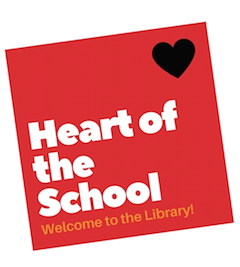 The library is buzzing. The sounds of joyful reading fill the room. Students are huddled in every nook and cranny. Excited whispers abound: “Look at this picture!” “Have you read this one yet?” and “I met my goals!” The “beep beep” of checkout is constant.
The library is buzzing. The sounds of joyful reading fill the room. Students are huddled in every nook and cranny. Excited whispers abound: “Look at this picture!” “Have you read this one yet?” and “I met my goals!” The “beep beep” of checkout is constant.
St. Croix Falls Elementary, where I am the principal, is a rural school in northeast Wisconsin. We are very successful and consistently score as a school that exceeds expectations on the state report card. Our literacy scores place us in the top 5% of schools in the state. Perhaps more importantly, there is no gap between the 40% of our students who live below the poverty line and their more affluent peers. We are all good readers.
Sharing the Secret
We are often asked to share our secret. Visitors come to my school to chat with me and other staff, to observe in classrooms, and to hang out in our library. They want to know what we are doing that they might adapt for their school.
Why do we do so well? The bottom line is that we inspire our students to read. A lot. There are myriad components to our success, and the school library factors into most of them. We have a robust independent reading program that involves time spent reading in and outside of school, and the school library is the backbone of that program.
As I wrote in a post for Reading by Example, “I believe our emphasis on helping students learn to and love to read in massive quantities is why my school is one of the happiest and most successful schools I have ever had the pleasure of working in. And that’s what I tell folks who ask ‘how we do it.’ But guess what? They don’t always believe me. They are often incredulous and profess they don’t have enough time in the day to offer independent reading time.”
Create a Culture of Reading
The cornerstone of our independent reading program is our library. Again, the secret to our success is that we make time for reading. We guide students to good books, we get them hooked on reading, and then, largely, we get out of their way! That means we can’t rely on a library service model that only allows students to check out books once a week at a predetermined time. Recently, as a part of a Twitter chat, I tweeted the following.
My tweet sparked conversation. Educators liked the idea of an open library (sometimes called a ‘flexible schedule’ library), but there were questions too. Many people wanted to know how we managed an open library. Others tweeted that they felt an open library concept was impossible at their school for valid reasons, the most dire being that there was no library to open or that the library had no staff.
That breaks my heart and leads me to point out that advocating for school libraries staffed by certified teachers or teacher-librarians is a must. It matters. If you want to know how much, read the research brief here. I will continue to use my voice to spread the gospel of prioritizing school libraries. But, for now, if you don’t have a school library, I am deeply sorry. And if you have one? Open those doors wide!
Lessons Learned by a Librarian-Principal
Before I was the principal, I was the teacher-librarian at my school for eight years. It took me years to get the library running how I wanted it to – at full speed ahead but smooth and manageable even at a breakneck pace. (Now the amazing Amy Klein is the teacher-librarian.)
Over the years we have learned a lot and I want to share those lessons. The questions and answers below highlight the top five concerns of the tweeps who shared questions with me – they were all problems I encountered and learned how to handle.
1. What about lost books?
Just get over it. You will lose books. You always will, whether or not you have an open library. In fact, now that students have a sense of ownership of our library and the resources within, I find they take really good care of it. Last year an inventory showed very little loss. We buy a lot of paperbacks, which our students prefer, and we get them for low cost through thrift store searches, First Book, and Scholastic Book Clubs. Then we try to live the old saying, “Easy come, easy go.” Every book lost from the library is a book gained in some child’s home anyway.
2. How can students check out books while the librarian is teaching?
At my school we manage this in two ways. One, we teach all teachers how to use the checkout software. That way, any adult who is in the library can help students check out. Some teachers bring their entire class to the library several times a week or even every day. Other teachers access the web-based software from their classrooms. They send kids to the library to choose new books which they bring back to class, then the teachers enter the barcode by hand rather than scanner.
We also teach students to use the checkout computer. It isn’t hard and the students love it! They can use the circulation desk computer or a self-checkout computer we set up for them.
3. Won’t the books get checked in and/or out incorrectly if untrained people do it?
Yes. The books will sometimes get checked in and out incorrectly. Once a quarter we print a list of all of the books checked out for each homeroom class. Teachers help by sharing the lists with their students, and students help by returning books they don’t need, finding books on shelves that weren’t checked in properly, and otherwise helping the librarian get things straight when it comes to who has what.
4. Won’t students waste time and fool around?
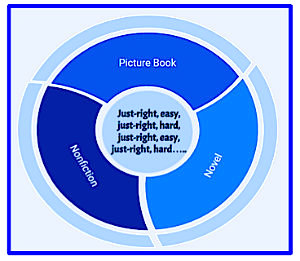
5. How will do you keep the library neat, tidy, and organized?
When it comes to keeping shared learning spaces tidy and organized, we are unrelenting. We believe that libraries that are well-ordered and uncluttered make the process of teaching students to learn to and love to read easier. We want students to be able to find the books they want quickly and efficiently.
That means two things at my school. One, the library is organized with a combination of the Dewey Decimal System and a bookstore model. There are baskets of popular series, an open-top browser for picture books, spinning racks for paperback novels, and a very well-organized nonfiction section.
Part of teaching our students to use the library is teaching them to take good care of it. Adults do very little reshelving. Students are responsible for putting their own books back. They are also trained to notice messes and to tidy them up without being asked. The older students know what it means to “walk the shelves,” go shelf-by-shelf to make sure the books are in order. They often volunteer to do so. Once a week or so an adult walks the shelves as well. Our library is remarkably neat, tidy, and organized.
For More Information
I truly hope that more school libraries embrace an open-door concept. If you decide you’re ready to move in that direction, please reach out! Amy and I are happy to help! Additionally, check out Valentina Gonzalez’ fabulous post on opening school libraries in summer months, the American Association of School Librarians position statement on flexible schedules, and Game Changers by Colby Sharp and Donnalyn Miller, the book that sparked the tweet that sparked this post.
_______________________________________
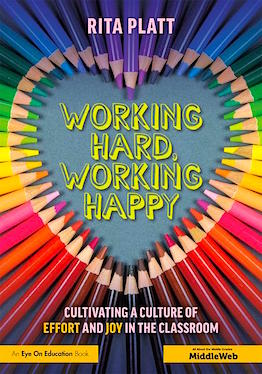

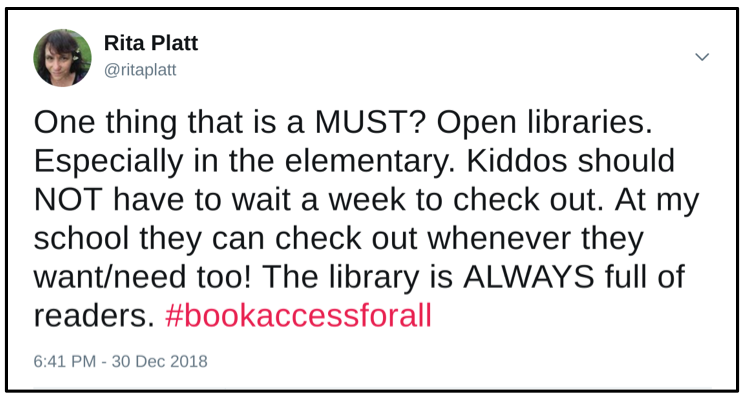
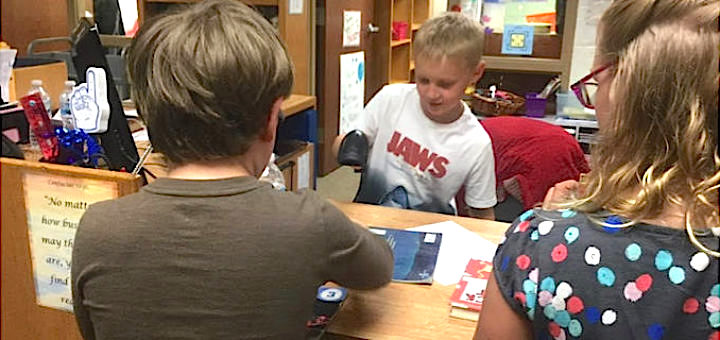

































Rita please share with me a school that needs books and I will use all of my bonus points I have saved up and ship the books to have, use,or give away. Every child deserves books to read and love.
Oh that is so kind! I will reach out to some schools and get back to you!
This was our method at my previous middle school. There were days when we had to turn classes away. Too many bodies (fire regulations).
I had library aides and the Language Arts teachers knew how to check books: they got a hoot out of doing this! I was involved in as many committees as I could; a ready volunteer. Your faculty and staff need to see you and know you as a helpful team player. This is one method of achieving your own goals. You give: you get. I had great co-operation. Now semi-retired, and working in another middle school, the philosophy here is different. Admin. here are not as focused on the library program. I am trying to change this; but it is a slow process; and being part-time also poses hurdles. Still, it can be done: I did it. And, it worked very well for my middle school. Try to involve your admin and teachers involved and you are near the goal. Thanks for the article.
Great advice, Maria! I agree, it really is important for librarians to roll up their sleeves and work with teachers. You give, you bet. YES! YES! YES!
I am a new elementary school librarian at the Milwaukee French Immersion School. Our library collection is half French and half English and the students learn to speak, read, and write in both languages. I am very interested in moving the library into a “flexible-schedule” library, but it seems overwhelming to jump right in. I am thinking about starting next year with just the 5th grade classes (the highest grade in our school) and using them as guinea pigs, so to speak. Can you give me any advice on how to begin the move toward becoming a flexible-schedule library? I plan on doing some research over the summer. I would like to come up with some ideas I can implement in the coming school year. I appreciate any guidance you can offer.
Carolyn, I think starting with just 5th grade is a great idea! The key is to get teachers on board. Then, spend a class period or two teaching the kiddos to use the checkout/in system. If you want to start slow, you can even just open one section to “anytime checkout.”